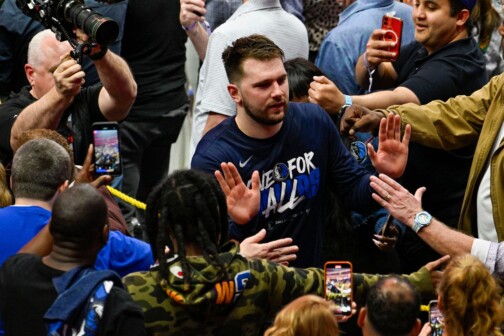Most Texans are not meeting the physical activity guidelines for aerobic exercise and muscle-strengthening activity, according to the Centers for Disease Control.
About 1 out of 5 Texans met federal guidelines for both activities in 2011. Slightly less than half meet the aerobic activity guidelines and about 1 out of 4 met the muscle-strengthening guidelines. The Texas rates were slightly below those of the national averages.
The Physical Activity Guidelines for Americans recommend that adults get at least 2½ hours a week of moderate-intensity aerobic activity such as walking, or one hour and 15 minutes a week of vigorous-intensity aerobic activity, such as jogging, or a combination of both. The guidelines also recommend that adults do muscle-strengthening activities, such as push-ups, sit-ups, or activities using resistance bands or weights. These activities should involve all major muscle groups and be done on two or more days per week.
The West (24 percent) and the Northeast (21 percent) had the highest proportion of adults who met the guidelines. Hispanics, older adults and obese adults were all less likely to meet the guidelines. Nationwide, 51.6% met the aerobic activity guideline and 29.3% of U.S. adults met the muscle-strengthening guideline.
Riva Rahl, MD, medical director of Cooper Wellness in Dallas, said, “It is not surprising that (Texas and the South) are not doing as well as other regions – there is a correlation to the higher rates for obesity and overweight in this area as well. It is really disappointing to see how few people are meeting the standards for physical activity given that this is one of very few things that has been unequivocally proven to be most effective in reducing the risk for chronic disease.”
“Although only 20 percent of adults are meeting the overall physical activity recommendations, it is encouraging that half the adults in the United States are meeting the aerobic guidelines and a third are meeting the muscle-strengthening recommendations,” Carmen D. Harris, M.P.H, epidemiologist in CDC’s physical activity and health branch, said in a statement. “This is a great foundation to build upon, but there is still much work to do. Improving access to safe and convenient places where people can be physically active can help make the active choice the easy choice.”
Before 2011, state-based prevalence of U.S. adults who met the 2008 Physical Activity Guidelines for Americans for aerobic and muscle-strengthening activities were not available. In 2011, the Behavioral Risk Factor Surveillance System (BRFSS) included new questions to assess both activities. BRFSS data are self-reported and might be overestimated because of social-desirability bias, recall limitations, or other factors.
If the self-reported data are accurate, Americans are exceeding the Healthy People 2020 goals for strength training and moderate physical activity. However of all health behaviors, people are least aware of how physically active they are.
In one study, about 40 percent of adults said they got enough physical activity in a day to have a positive impact on their health. They wore accelerometers to track what percentage actually met the government guideline. The result: about 4 percent.
The researchers also measured how many children ages 6 to 11 and adolescents met the government’s guideline of 60 minutes a day of physical activity for those 18 and under. About 42 percent of the younger group met this goal, compared with 8 percent of adolescents.
Michael Connors, assistant professor in the physical therapy center at the University of North Texas Health Science Center in Fort Worth said, “We are experiencing an obesity epidemic that is transcending gender and race. While more individuals are embracing (the federal guidelines), we still have an issue with a population that is less active due in part to enhancements in technology.”
Steve Jacob is editor of D Healthcare Daily and author of the book Health Care in 2020: Where Uncertain Reform, Bad Habits, Too Few Doctors and Skyrocketing Costs Are Taking Us. He can be reached at [email protected].





